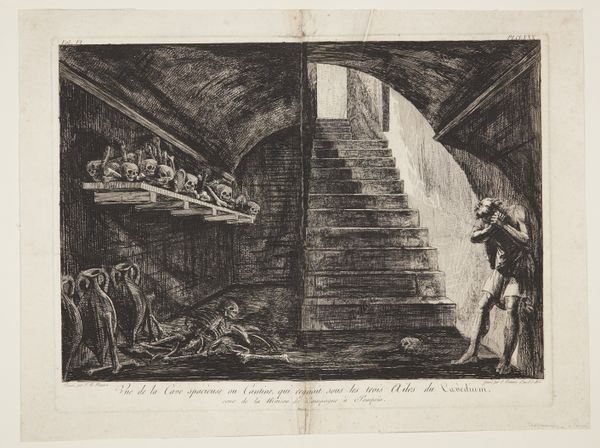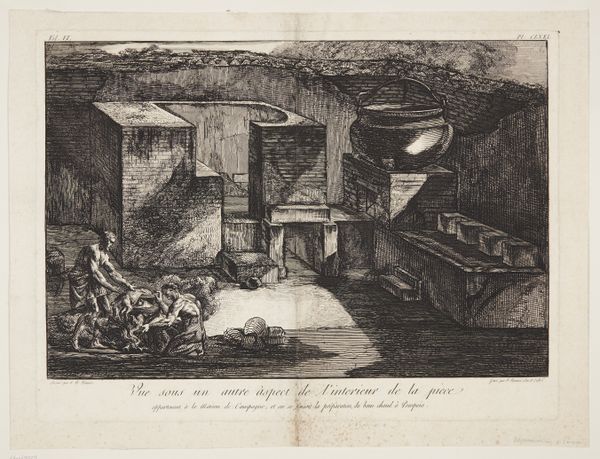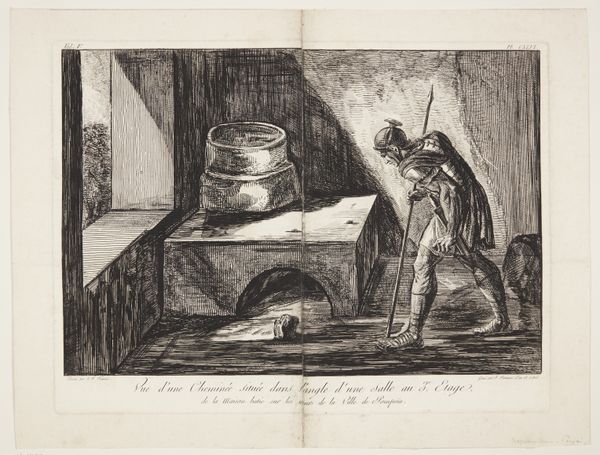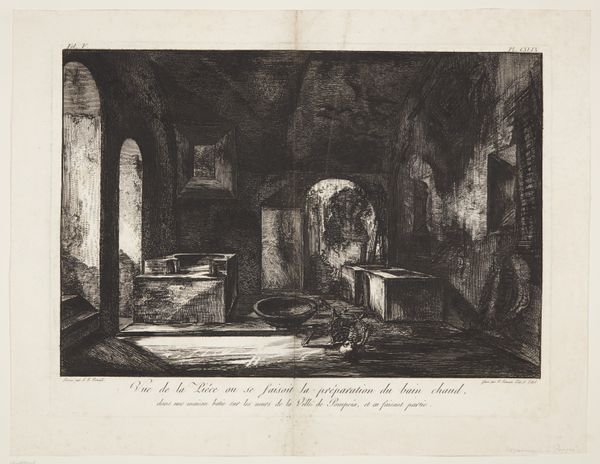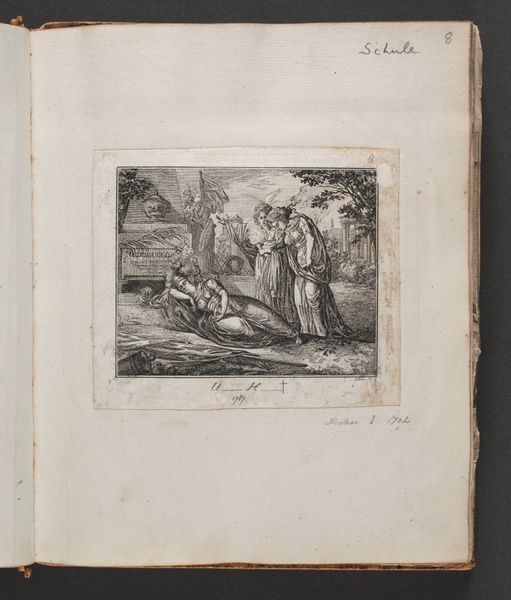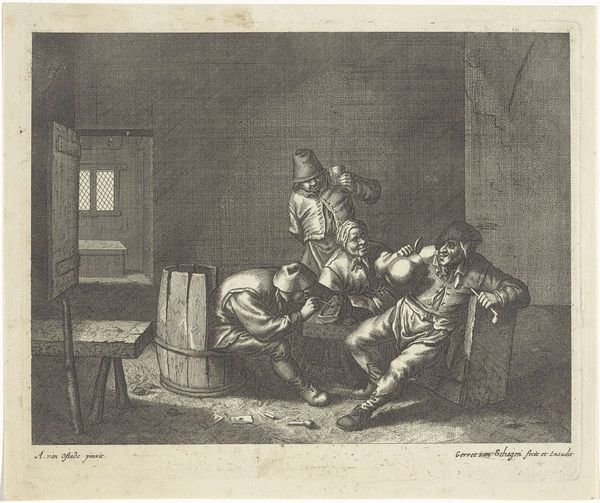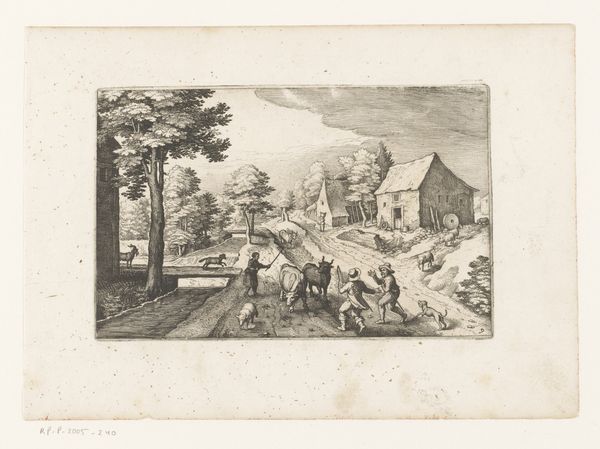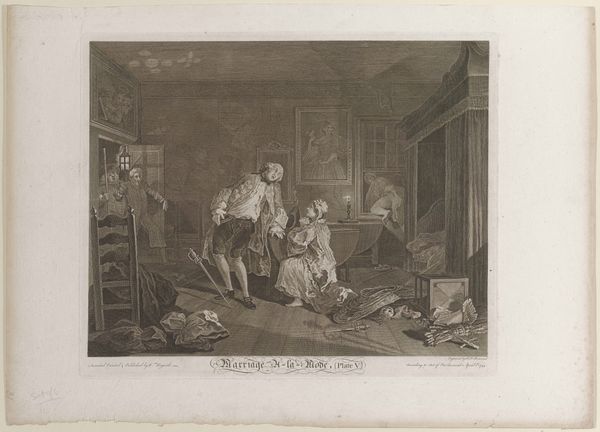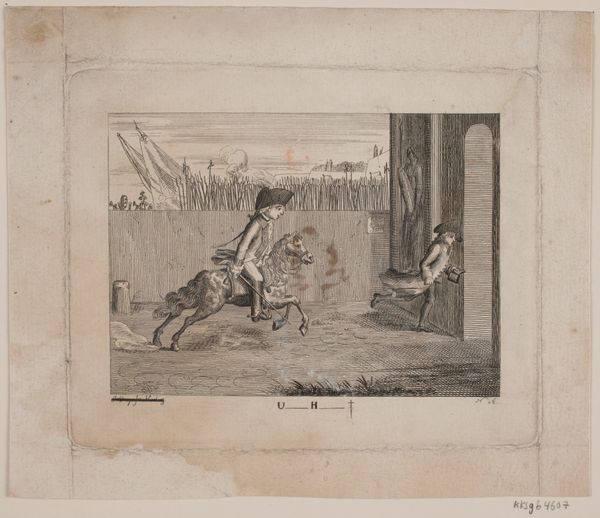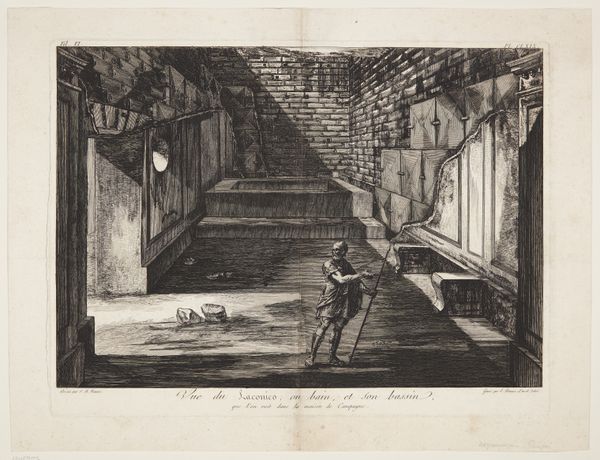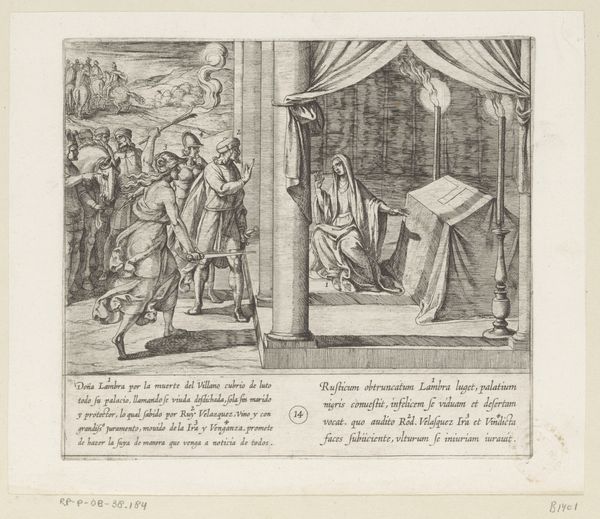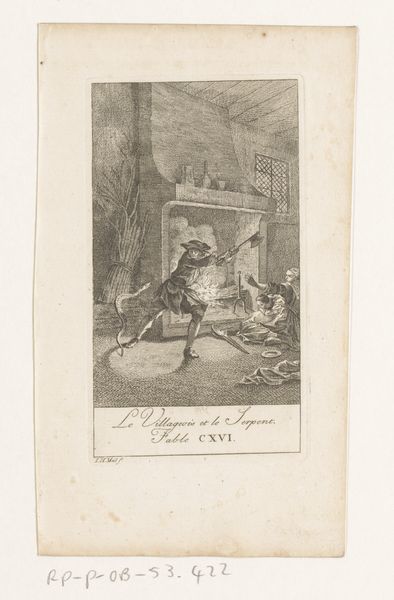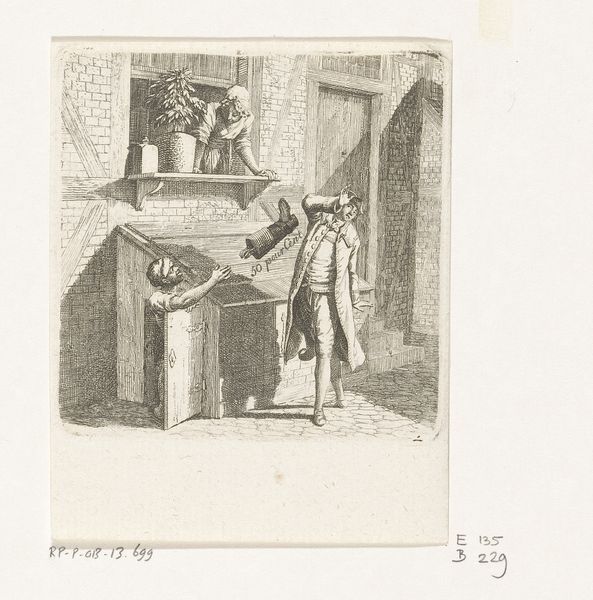
Vue du Sterquilinium situé près du théâtre découvert dans la Ville de Pompeiia 1805
0:00
0:00
print, etching
#
neoclacissism
# print
#
etching
#
ancient-mediterranean
#
history-painting
Dimensions: 425 mm (height) x 572 mm (width) (plademaal)
Francesco Piranesi created this print of a view of a Sterquilium near the theatre in Pompeii some time between 1778 and 1810. This work emerges from a period of intense archaeological interest in the ancient Roman city, and invites us to consider whose stories get told through such discoveries. The print depicts two men within the excavated site. One, in shadow, seems to be working, while the other stands idly by, observing. Are they equals, or is one a laborer under the gaze of another? The artist’s focus on the unearthed Sterquilium, or public latrine, brings everyday life in ancient Rome into view, challenging the traditional focus on emperors and monumental architecture. Piranesi’s detailed rendering gives us a glimpse into the past, inviting us to reflect on the labor, class distinctions, and social hierarchies embedded within the act of rediscovering and representing history. What does it mean to unearth the most private of spaces for public consumption?
Comments
No comments
Be the first to comment and join the conversation on the ultimate creative platform.
